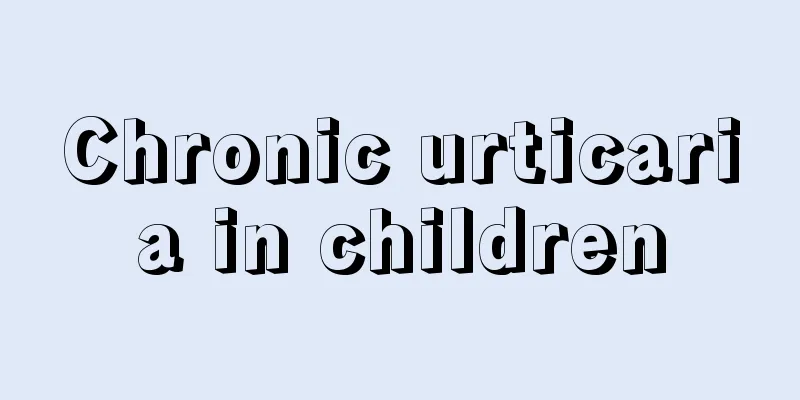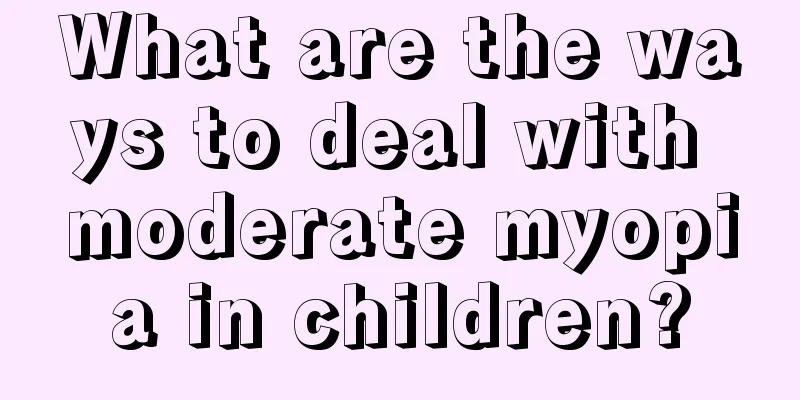Chronic urticaria in children

|
Chronic urticaria is a type of urticaria, and is also a skin disease with a long course and slow onset. Chronic urticaria is generally caused by allergies, so the incidence of chronic urticaria is relatively high for children with poor resistance. In order to alleviate the pain caused by this disease, timely treatment is necessary. Below, I will introduce the treatment methods of chronic urticaria in detail. 1. Find the cause Ask about the medical history in detail, strive to find out the cause of each patient's illness, whether there is a family history of the disease, whether there is a history of acute or chronic infection, medication history, occupation, lifestyle habits and environmental changes, etc. Check blood, urine and stool routinely, and perform skin allergen test, ice test, acetylcholine skin test, serum IgE test and serum complement test as needed. Some patients need to undergo tests for HBV-DNA, thyroid antibodies, malignant tumors, etc. 2. Avoid triggering factors For cold urticaria, pay attention to keeping warm; for acetylcholine urticaria, reduce exercise, sweating and mood swings; for contact urticaria, reduce the chance of contact, etc. 3. Use antihistamines Most patients can achieve satisfactory results after treatment with antihistamines, but a few patients are more stubborn. For stubborn and intractable urticaria, the dosage can be increased or combined medication can be used. H1 receptor antagonists have strong anti-histamine and anti-other inflammatory mediator effects and are effective in treating all types of urticaria. Commonly used H1 receptor antagonists include diphenhydramine, cyproheptadine, chlorpheniramine, acrivastine, cetirizine, mizolastine, loratadine, ebastine, azelastine and desloratadine. 4. Choose drugs that inhibit mast cell degranulation Ketotifen inhibits mast cell degranulation and prevents the release of inflammatory mediators by increasing the concentration of cAMP in the body. Its inhibitory effect is stronger and faster than that of sodium cromoglycate and it can be taken orally. Tranilast reduces histamine release by stabilizing mast cell membranes. 5. Glucocorticoids It has strong anti-inflammatory and anti-allergic effects. It can stabilize mast cell membranes and lysosomal membranes, inhibit the release of inflammatory mediators and lysosomal enzymes; constrict blood vessels and reduce exudation. It has good effect on urticaria, especially suitable for acute urticaria, serum sickness urticaria, pressure urticaria and autoimmune urticaria. Commonly used drugs include prednisone and Diprosone. In emergency situations, use hydrocortisone, dexamethasone, or methylprednisolone intravenously. 6. Immunosuppressants When patients with chronic urticaria have an autoimmune basis, the disease recurs, and the above treatments are ineffective, immunosuppressants can be used. Cyclosporine has a good therapeutic effect. Azathioprine, cyclophosphamide, methotrexate and immunoglobulin can all be tried. Tripterygium wilfordii also has a certain therapeutic effect. |
<<: Can a three-year-old baby brush his teeth?
>>: What to do with chronic urticaria in children
Recommend
Baby doesn't like to drink milk in summer
We all know that when the weather is hot in the s...
Children can prevent myopia by pressing this spot every day
In her book "Prevention of Presbyopia",...
Children are prone to allergies
Having a baby with allergies can make parents fee...
Treatment of chronic granulomatous disease in children
Chronic granulomatous disease in children is a he...
How to help children enhance their immunity?
The children at home always like to go out and pl...
Introduction to Neonatal Diseases
For newborn babies, it is difficult to find relev...
How to treat children’s thick white tongue coating?
The problem of thick white tongue coating is very...
What foods are good for children who sweat a lot?
Children who sweat frequently should pay attentio...
What are the commonly used massage techniques for vomiting in children?
Children's stomachs are relatively weak. Once...
How many days does it take for a child to recover from chickenpox?
Parents are most anxious when their children get ...
What should I do if my baby has allergies and itching? These methods are simple and effective
The baby's body is itchy and red, which is an...
What are the sports for children?
What kind of sports are there for young children?...
Reasons why your baby's urine is red
The birth of every new life will make our parents...
Why does my baby have a stuffy nose at night?
The baby's immune system has not yet fully de...
What causes tics in children?
Childhood tics are related to many factors. If yo...









